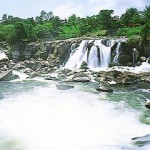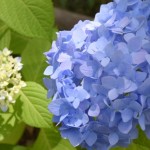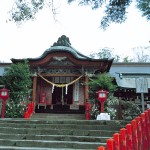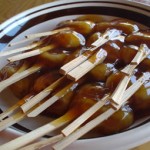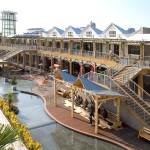I always wanted to go to Kanmuri-dake (冠嶽), because of the attractive sounding festival “Jofuku Kakan-sai (徐福花冠祭) and Goma Kuyo (護摩供養, fire rituals) which people hold there every year. In addition, I’ve seen exotic looking pictures of the place.
It’s about an hour and a half drive from Kagoshima city towards Satsuma-Sendai city. Go through Ichiki-kushikino city center on Route 3, and then turn right onto Prefectural Route 39, Kanmuri-dake Hanakawa Sabo Park (冠嶽花瀬砂防公園) will come into view on the left side of the valley.
We went to Kanmuri-dake Shrine (冠嶽神社) first.
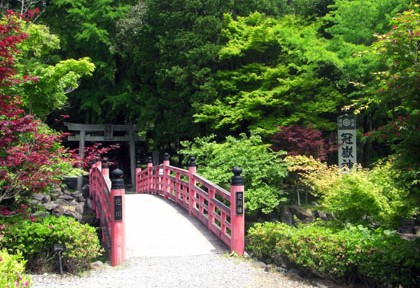
On the right side of the car park is the approach to the shrine.
The contrast of the fresh green of trees, red leaves of maple trees and the red arched bridge made me feel enlivened.
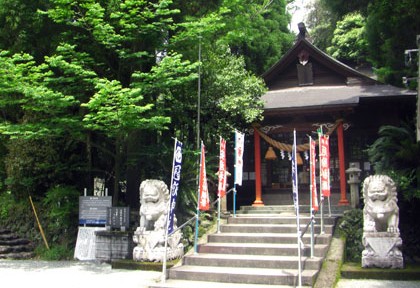
Cross the arched bridge and walk under the torii gate、then the shrine is there!
Near the Saisen-bako (賽銭箱, a box to collect offerings), there is an Onuta (大幣, a wooden wand used in Shinto rituals which is decorated with many zig-zagged paper streamers) and there is an explanation on a sign board about how to use the wand.
It seems like Shrine visitors are allowed to do the Shinto purification.
We tried it as well, and I feel like I received blessings….
If you walk to the right path from the approach to the shrine, you can see an interesting gate (pictured below).
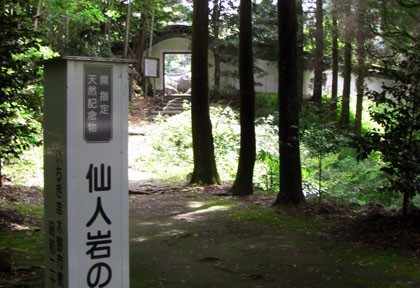
On the other side of the little path in the wood, there is a Chinese looking gate.
The sign in front says “Plant Community of Sennin Rock”.
This is the legend of Jofuku (徐福), who was ordered by Shi Huangdi, the emperor of China more than 2200 years ago, to come here to search for the elixir of life.
Sennin Rock is on the cliff at the back of the shrine, and it is said that a hermit trained on the rock to become a wizard.
Many rare plants grow naturally there, and the plant community is a natural monument designated by Kagoshima prefecture.
There are legends of Jofuku all over Japan, but I, from Kagoshima, want to believe that Kagoshima is the real place of origin of the legend.
And, I want to believe that he came here, where these rare plants grow, to search out the elixir of life!
There is an excellent Chinese garden which makes you forget you are in Japan on the other side of the gate. It is its own little world.
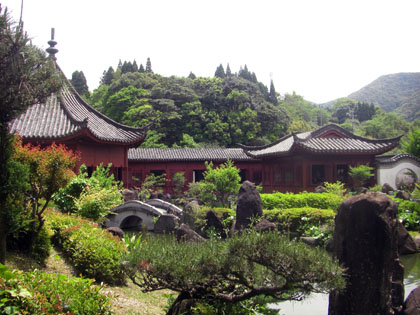
This is Kangaku-en (冠嶽園), a garden which is built associated with Jofuku.
This is Kangaku-en (冠嶽園), a garden which is associated with Jofuku.
It is not just a frothy tourist spot. It is well looked after and the arrangement of the buildings and the garden is fascinating.
I forgot about my daily life here and felt like I was abroad.
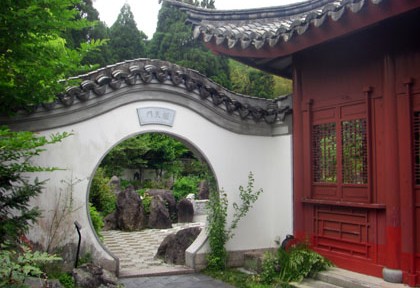
This is “Hiten-mon (榧天門)” which means “the gate of Japanese nutmeg tree which almost can touch the sky”. There used to be a huge nutmeg tree right next to the gate, but it died several years ago. The tree trunk is shown at the entrance of the octagonal shaped building. Now, a new nutmeg tree is growing.
There is a statue of Jofuku in the garden. The statue is thinking about a far eastern place over the sea.
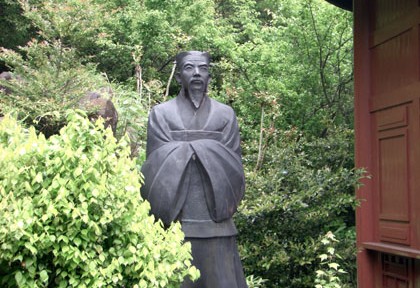
Jofuku didn’t go back to China.
Did he really come to Japan?
When he left China, he took several thousand little children, grains, seeds, and many technical experts.
Was his real aim the elixir of life?
The legend of Jofuku is so mysterious.
If you visit, the place is beautiful in itself, but it’s even more interesting if you know a little about Jofuku.
Those two places, the shrine and the Chinese garden, are good enough to see only by themselves, but the walking path on the left side of the shrine is very nice, too.
An unexpected adventure was waiting for us there, but I will write about it next time.
Thank you for reading!
Category : Sighthtseeing Info , text @en
Tag : 24 divisions of the solar year , 24sekki , corona virus , COVID-19 , COVID19 , Emergency , Japanese culture , season , tanabata , The coronavirus , 日本の文化






